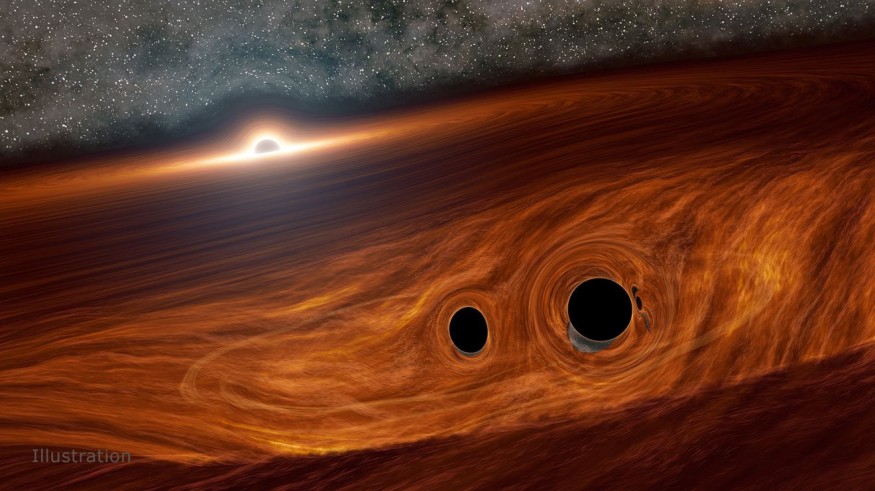Astronomers may have discovered light signals created by colliding two black holes far in space, a world first.
A black hole is an area of space in which the gravitational pull is so strong that nothing, including light, can escape once within the event horizon.
Scientists at Caltech's Zwicky Transient Facility in Palomar Observatory in San Diego believe they have discovered the first known light flare from colliding black holes.

According to Space Coast Daily, gravitational waves are ripples in space and time that may be detected with incredibly sensitive detectors on Earth when two black holes spiral around one other and eventually collide.
Because black holes and black hole mergers are entirely dark, astronomers can't see them using telescopes or other light-detecting tools.
However, theorists have proposed a method for producing a light signal from a black hole merger by causing adjacent material to radiate.
On May 21, 2019, this was how the black hole merger was discovered for the first time.
In a first, astronomers may have seen light from two smaller black holes that may have merged together to form a new black hole. 🤯 Here’s what we know about this cosmic collision: https://t.co/uQ898J0sBg pic.twitter.com/wlC6cdH1oE
— NASA (@NASA) June 28, 2020
ALSO READ : NASA Hubble Space Telescope Shares Amazing Photo of a Spiral Galaxy Millions of Light Years Away
NASA Telescopes See Black Hole Collision That Could Have Exploded With Light
The ripples were detected by two gravitational wave detectors: the Laser Interferometer Gravitational-wave Observatory of the National Science Foundation and the European Virgo detector.
Scientists at the Zwicky Transient Facility facility were looking for light signals from the area where the gravitational wave signal originated after the merger was discovered.
A recent paper, titled "Cosmologically Coupled Compact Objects: A Single-parameter Model for LIGO-Virgo Mass and Redshift Distributions," published in the journal Physical Review Letters, describes the ZTF findings.
The authors speculate that the two companion black holes, each several dozen times more massive than the Sun, were orbiting a third, supermassive black hole with mass millions of times that of the Sun and surrounded by a disk of gas and other matters.
When the two smaller black holes joined, they created a new, bigger black hole that experienced a kick and rocketed off in an unpredictable direction. The new research may have driven through the gas disk, causing it to light up.
Daniel Stern, a co-author of the new study and an astrophysicist at NASA's Jet Propulsion Laboratory in Southern California, a Caltech division, said in a NASA statement that this discovery is incredibly intriguing.
Based on their unwittingly made signal, he said scientists can understand a lot about these two merging black holes and their environment. As a result of ZTF's discovery, as well as what scientists can learn from gravitational waves, a new route for studying both black hole mergers and these disks encircling supermassive black holes has opened up."
RELATED ARTICLE : Is NASA's Top Priority the Discovery of Other Kinds of Life and Possible Habitat Apart from Earth?
Check out more news and information on Space in Science Times.









